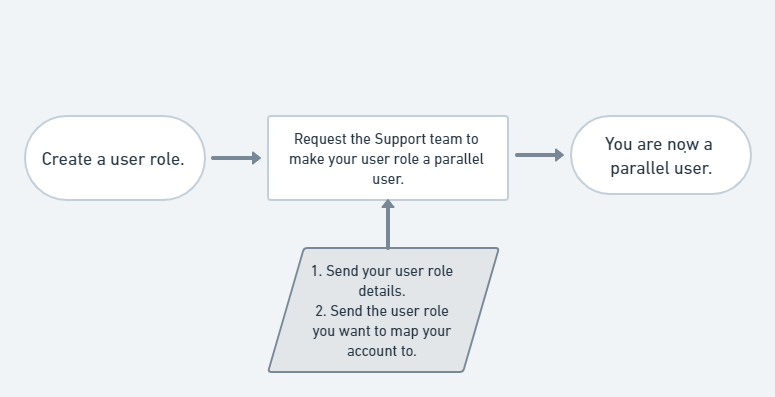Parallel users
Setting Up Parallel Users in Vymo
Parallel users in Vymo are designed to assist with the monitoring, managing, and reporting of activities and performance within the team. They are particularly useful for supporting leaders by providing an extended view and control over various operational aspects.
Creating Parallel Users
To create a parallel user account:
- Identify the User Role: Determine which user role you want to mirror or become parallel to within the company.
- Request Creation: Send your user role details along with the user role you wish to map your account to the Support team. Request them to set you up as a parallel user.
- Approval and Access: Once your request is approved, you gain access to observe the activities, goals, and performance metrics of the user role you are mapped to.

Use Cases for Parallel Users
- Data Visibility: The parallel user gains visibility based on the observer user they are mapped to.
- Role-Based Access Control (RBAC): Actions on the visible data are based on the role of the parallel user, not the user they are mapped to.
- Restrictions: Parallel users cannot be assignees or participants in leads and activities, maintaining a clear separation of operational roles.
- Bulk Upload Capability: You can now create parallel users using the bulk upload feature on the web, eliminating the dependency on the support team for this setup.
Parallel Users and Goals
- Goal Observation: As a parallel user, you can view the goals of the account you are mapped to. This includes observing their progress and any updates to their goals.
- Limited Interactions: You are not permitted to upload targets or achievements for the user you are mapped to; you can only view their goal card to monitor performance.
This setup is particularly effective for providing oversight and support without interfering with the direct management of tasks and responsibilities, ensuring that leaders can be more effectively assisted by team members who understand the broader context of their activities.